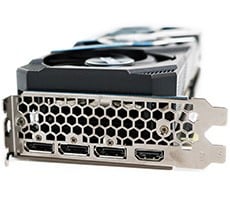Power Consumption and Thermals
We'd like to cover a few final data points before bringing this article to a close. Throughout all of our benchmarking and testing, we monitored how much power our test systems were consuming using a power meter. Our goal was to give you an idea as to how much power each configuration used while idling and under a heavy workload. Please keep in mind that we were testing total system power consumption at the outlet here, not just the power being drawn by the motherboards alone.
|
|
|

You would have to expect that two cards plus the BigWater pump plus all of those MOLEX connectors we plugged in would add up. At idle, the total system draw was at 217 Watts, well over all of the other cards except the Radeon HD 4870, which is a mere 20W back. Under load, however, the total consumption rate nearly doubles, sucking down a hefty 384 Watts. Clearly, purchasing the ECS GeForce 9800 GTX+ Hydra will not only cost you up front, but will continue to draw power, and money, from you down the road.
One of the main selling points, other than pure performance, would have to be the quieter, cooler operation of the two 9800 GTX+ cards and the Hydra didn't disappoint. Idle temps were a chilly 37 degrees Fahrenheit, and when measured again while under load only raised to 44 degrees. That's close to the same temperature as the two other GeForce cards while at idle. Looking at ATI's camp, the HD 4870's temps nearly double that of the ECS Hydra. If there's one thing that might detract from this is the noise output of the Thermaltake BigWater 760is. Even on the low setting, the fan does make a bit more noise than a single card's cooler might produce, although probably not as much as two cards could have. It's a small price to pay for this kind of performance.







